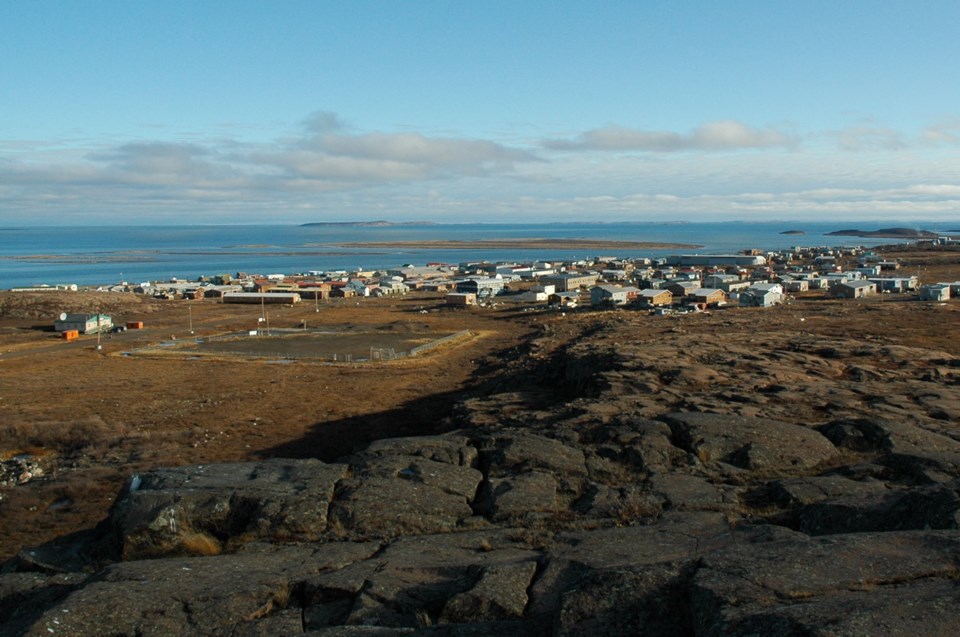In the Nunavut hamlet of Kugluktuk on the shore of the Arctic Ocean, a head of broccoli costs $5.45. A half litre of plain yogurt costs $6.70 and a pound of ground beef costs $19.99.
As a student on a budget, I relied on canned goods for my stay there last week. At $5.35 for a can of soup, I was lucky to be able to afford that.
It is no wonder that the Canadian Consumer Health Survey has found that that 36 per cent of Nunavut households are food-insecure. And, with one-third of Nunavut residents under 14 years old, high food prices are disproportionately starving children. These hungry children are vulnerable children. Their parents face unemployment rates more than twice the national average and suicide rates 10 times the national average.
The Canadian government is addressing this crisis through Nutrition North Canada, a subsidy program launched by the government in 2011 to make “perishable, nutritious food more affordable.” But the subsidy is provided to retailers who operate in northern communities, not consumers who eat in northern communities. Retailers are presumed to pass the subsidy on to consumers, and many northerners worry that the subsidy is not effective.
Northerners have good reason to worry. More than half of the isolated communities eligible for the subsidy have only one retailer, the North West Company (or Northern Store), which appears to be acting as a monopolist.
The North West Company receives half of all federal food-subsidy dollars and has 6.8 times the employees and 8.5 times the total revenue of its next largest competitor. Many northern communities are dependent on the monopolist retailer for almost every aspect of their lives, including groceries, hardware, clothing and even banking.
There are no substitutes for the brick-and-mortar retailers in the Arctic. Direct or internet orders have high delivery costs and are not able to deliver perishable food. Few northerners have the resources to harvest country food, and growing food locally using greenhouses or hydroponics is prohibitively expensive with low yield.
There are also significant barriers to competitor retailers entering the northern business. The North West Company’s buying power and vertically integrated supply chain are difficult for competitors to replicate.
On the other hand, it might be more efficient for a single retailer to serve a community of only 1,500 people. While many smaller retailers could compete, none of them would have the scale to provide the services with low costs of production. If a natural monopoly is adequately regulated, it can achieve the lowest possible prices for consumers.
We can’t blame the North West Company for trying to produce returns for its shareholders, as that is its objective as a public company. Given the monopoly it enjoys in the North, it is very successful: Over the past four years, the North West Company’s northern division has delivered profit margins nearly twice Sobeys’ and 42 per cent higher than Metro’s, even though you would expect significantly larger-scaled firms operating in densely populated areas to have higher returns.
But how can we as Canadians entrust a monopolist retail company, whose shareholders are global investment funds, to be responsible for the health of Kugluktuk’s children? What about establishing a governing body to regulate the prices of nutritious and staple food products, or public ownership of food retailers to increase transparency?
Could we find ways to make internet orders widely available and affordable through government subsidy or corporate benevolence? What about just providing a food subsidy directly to northern consumers and trusting them to make good decisions for themselves?
In the “Feeding My Family” Facebook group, more than 24,000 northerners share their frustrations about their high food prices. In Kugluktuk, the local elementary school offers breakfast to all students, and the summer day camp provides three meals a day.
The local high school cooks lunch for the entire community once a month on the Wednesday before payday. It is well attended, as many residents can no longer afford to eat. But people need healthy food, every day.
It must be possible to provide residents of isolated communities the reasonable food prices they need to thrive.
Raphael Berz is entering Grade 12 and has been studying the high grocery prices in Canada’s north. He lives during the summer in North Saanich.



